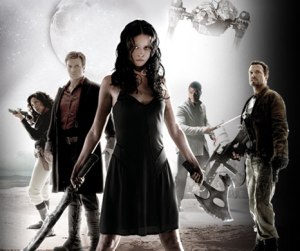The thing that most shocks people out of their skulls when they read George R. R. Martin’s A Song of Ice and Fire series is the abandon with which he kills off major characters. Characters so major that you’ve assumed all along that the series is about them.
Ask any writer, and I think they’ll tell you that their characters become a kind of family. After all, you come to know them so well that you hear their voices in your head. So killing them is not something done lightly. The question is, why kill off major characters at all?
One reason might be to reflect the times in which the characters live. If you read Charles Dickens, you’ll find it entirely possible in some books to lose count of the number of deaths. But consider: in the 1800’s, one in five children were dead by age five, and those who survived childhood could expect to be dead by forty. Death in those times was very much a part of life.
 Another reason is what I call the Joss Whedon effect. Fans of the TV series Firefly were, to put it mildly, shocked that two major characters were killed in the follow-up movie, Serenity. The reason for this, as Joss Whedon explained in the movie commentary, was to place some doubt in the minds of the audience as to whether or not the remaining characters would survive. After all, in most stories, no matter how harrowing the action, the major characters generally pull through. The only real question is, how will they pull through? By killing two characters, Whedon shook us out of our complacency and really made us wonder not just how, but if our beloved characters would survive.
Another reason is what I call the Joss Whedon effect. Fans of the TV series Firefly were, to put it mildly, shocked that two major characters were killed in the follow-up movie, Serenity. The reason for this, as Joss Whedon explained in the movie commentary, was to place some doubt in the minds of the audience as to whether or not the remaining characters would survive. After all, in most stories, no matter how harrowing the action, the major characters generally pull through. The only real question is, how will they pull through? By killing two characters, Whedon shook us out of our complacency and really made us wonder not just how, but if our beloved characters would survive.
This line of thinking was prompted by a comment I received regarding one of my fanfic stories. “Western Castle” is an alternate universe version of Castle set in the wild west. In that story, I killed off one of the major characters. Why? Partly to achieve the Joss Whedon effect, so that the reader would wonder who would survive, and partly to resolve a minor plotting problem that would arise later on if the character didn’t die. The comment I received was to the effect that killing that character was painful to that reader. For a writer, that’s a nice compliment, tempered by the fact that I didn’t create the character in the first place, but still.
Regarding the death of major characters, the worst thing you can do is what is so commonly done in comic books: bringing supposedly dead characters back to life. This, of course, completely obliterates any drama around death. Rather, the reader will likely yawn and ask herself how long this time before the character comes back.
In The Avengers, Joss Whedon did it again, killing off a major character to better motivate the remaining heroes to come together. Painful, but forgivable. Less forgivable was bringing that character back to life in the TV series, Agents of Shield. From now on, any death in any Marvel Universe movie will be greeted by yawns, not tears.
If you use death, make it matter. Use the death to achieve a plot goal or to shake up readers’ expectations. And keep your characters dead once they’re dead. After all, you can only toy with your readers so long before they decide they don’t want to play any more.